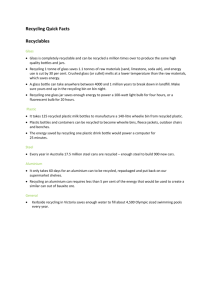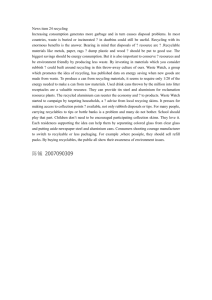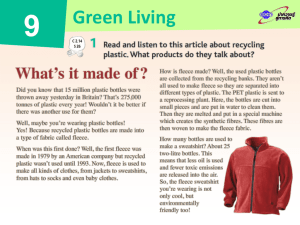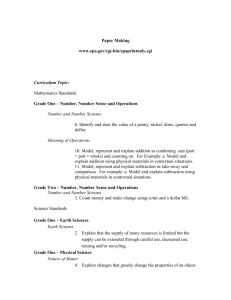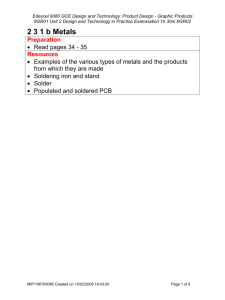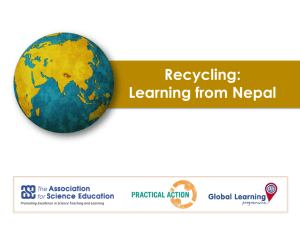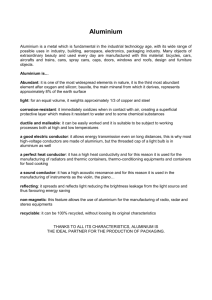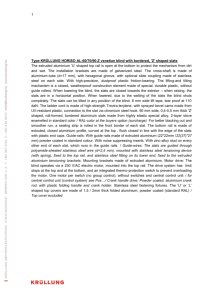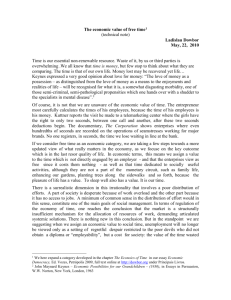Upgrading Technologies By Turra Ossau
advertisement
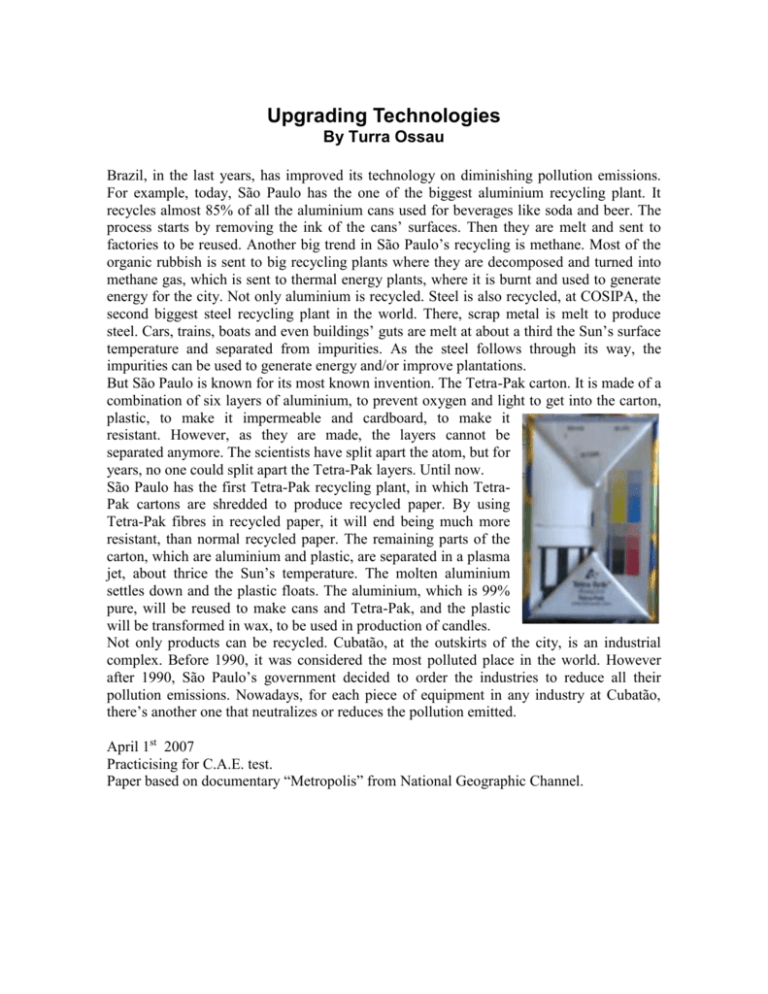
Upgrading Technologies By Turra Ossau Brazil, in the last years, has improved its technology on diminishing pollution emissions. For example, today, São Paulo has the one of the biggest aluminium recycling plant. It recycles almost 85% of all the aluminium cans used for beverages like soda and beer. The process starts by removing the ink of the cans’ surfaces. Then they are melt and sent to factories to be reused. Another big trend in São Paulo’s recycling is methane. Most of the organic rubbish is sent to big recycling plants where they are decomposed and turned into methane gas, which is sent to thermal energy plants, where it is burnt and used to generate energy for the city. Not only aluminium is recycled. Steel is also recycled, at COSIPA, the second biggest steel recycling plant in the world. There, scrap metal is melt to produce steel. Cars, trains, boats and even buildings’ guts are melt at about a third the Sun’s surface temperature and separated from impurities. As the steel follows through its way, the impurities can be used to generate energy and/or improve plantations. But São Paulo is known for its most known invention. The Tetra-Pak carton. It is made of a combination of six layers of aluminium, to prevent oxygen and light to get into the carton, plastic, to make it impermeable and cardboard, to make it resistant. However, as they are made, the layers cannot be separated anymore. The scientists have split apart the atom, but for years, no one could split apart the Tetra-Pak layers. Until now. São Paulo has the first Tetra-Pak recycling plant, in which TetraPak cartons are shredded to produce recycled paper. By using Tetra-Pak fibres in recycled paper, it will end being much more resistant, than normal recycled paper. The remaining parts of the carton, which are aluminium and plastic, are separated in a plasma jet, about thrice the Sun’s temperature. The molten aluminium settles down and the plastic floats. The aluminium, which is 99% pure, will be reused to make cans and Tetra-Pak, and the plastic will be transformed in wax, to be used in production of candles. Not only products can be recycled. Cubatão, at the outskirts of the city, is an industrial complex. Before 1990, it was considered the most polluted place in the world. However after 1990, São Paulo’s government decided to order the industries to reduce all their pollution emissions. Nowadays, for each piece of equipment in any industry at Cubatão, there’s another one that neutralizes or reduces the pollution emitted. April 1st 2007 Practicising for C.A.E. test. Paper based on documentary “Metropolis” from National Geographic Channel.
